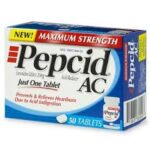If you’ve ever stared at a western blot film, hoping those bands would speak to you, you’re not alone. In molecular biology, every lane tells a story—and when it comes to phosphorylated proteins, that story can reveal exactly how your cells respond to signals, stress, and treatment.
Understanding protein phosphorylation is no longer optional in cell biology—it’s essential. Whether you’re researching cancer, immune pathways, or neural signaling, phosphorylated proteins act as vital messengers. But interpreting them requires more than running a gel. It takes purpose, precision, and a clear grasp of what immunoblots are truly capable of showing you.
In this guide, you’ll learn how to use western blotting effectively to reveal what phosphorylated proteins are really telling you—and how to avoid the common missteps that can blur the message.
Why Phosphorylated Proteins Deserve Your Attention
Proteins are more than static structures. They adapt, interact, and respond. Phosphorylation—a reversible post-translational modification—allows a cell to activate or deactivate a protein instantly. It’s the cell’s version of flipping a molecular switch.
In diseases like cancer, Alzheimer’s, or autoimmune disorders, these switches can get stuck in the “on” or “off” position. That’s why detecting phosphorylated forms of proteins offers insight not only into what’s present in a cell, but also what’s functionally active. Western blotting gives you a direct view of these activation states.
You’re not just looking for protein quantity; you’re asking a more refined question: Is this protein actually doing anything right now?
Getting Started: Keep It Cold and Controlled
Your results depend on how you treat your sample—literally. From the moment you collect your cells or tissue, phosphatases begin stripping off phosphate groups. Without intervention, you’ll never detect phosphorylation events accurately.
Use ice-cold lysis buffer, always supplemented with phosphatase inhibitors like sodium orthovanadate or β-glycerophosphate. Protease inhibitors are equally essential to prevent protein degradation.
Consistency is critical. Store samples at –80°C and avoid repeated freeze-thaw cycles. Even one careless moment can lead to inaccurate results.
Choosing the Right Gel and Buffer Conditions
After lysis, the next step is separating your proteins via SDS-PAGE. If you’re looking at phosphorylated proteins, resolution matters. Sometimes the phosphorylated and non-phosphorylated versions of a protein differ by just a few kilodaltons.
Use high-percentage or gradient gels (such as 4–12% Bis-Tris) to resolve these subtle size shifts. Always run controls—both positive (phosphorylated) and negative (dephosphorylated or untreated). This gives you clear benchmarks when interpreting band mobility.
Running conditions should be optimized to avoid overheating, which can alter protein conformation. Take your time. A rushed gel is a noisy gel.
Membrane Transfer: Precision is Power
Once proteins are separated, transferring them to a membrane is your next move. For phosphorylated targets, PVDF membranes are often preferred due to their strong protein-binding capacity and durability during probing.
Ensure complete and even transfer by pre-wetting PVDF in methanol and using chilled transfer buffer. Optimize voltage and time to avoid burning or incomplete transfer. Don’t rely on assumptions—use Ponceau S or a total protein stain to confirm success.
This stage sets the foundation for signal clarity in later steps.
Blocking: Say No to Casein Contamination
Blocking prevents non-specific antibody binding, but the choice of blocking reagent can make or break a phospho-protein blot.
Avoid milk-based blockers when probing for phosphorylated proteins. Milk contains casein—a highly phosphorylated protein that can compete with your sample and cause background noise. Instead, use 5% BSA in TBST or commercially available phospho-specific blocking agents.
This small detail makes a big difference. Cleaner backgrounds lead to sharper signals and more trustworthy results.
Antibody Strategy: Precision Starts with the Right Tools
Your primary antibody is the heart of the detection process. Choose an antibody validated for western blotting, and specific to the phosphorylated site of interest. Many companies offer phospho-specific antibodies that only bind when the target residue (Ser, Thr, or Tyr) is phosphorylated.
Use them at the dilution recommended in the datasheet, and always include controls—such as samples treated with phosphatase or kinase inhibitors. This helps confirm that your signal is phosphorylation-dependent.
Secondary antibodies should be highly specific and compatible with your detection system, whether chemiluminescent or fluorescent. Cross-reactivity can confuse results—so select wisely.
Detection: Make the Invisible, Visible
You’ve worked carefully to this point—now make sure your detection method does justice to your efforts. Chemiluminescent detection using enhanced chemiluminescence (ECL) remains a gold standard, offering high sensitivity and relatively simple workflows.
Fluorescent detection systems are also gaining ground, especially when quantifying multiple targets on the same blot. With near-infrared dyes, you can detect total and phosphorylated forms simultaneously without stripping and re-probing.
Just ensure that your exposure time is optimized. Overexposure can saturate bands and destroy quantification value.
Quantification: Let the Data Speak Clearly
A blot is only as valuable as its interpretation. Use densitometry software to analyze band intensity, normalizing phosphorylated protein signals to total protein or housekeeping controls like β-actin.
Avoid simply comparing one lane to another without normalization. Subtle differences in sample loading or transfer efficiency can distort your conclusions.
Look at your results critically. Ask yourself:
- Is the phosphorylation pattern consistent across replicates?
- Do the changes align with the experimental treatment?
- Are total protein levels stable?
When interpreted carefully, your blot can show not just that a protein is there—but that it’s active and responding.
Common Issues and Smart Fixes
Even with the best intentions, things can go wrong. Here’s what to watch for:
Weak or missing signal: Try increasing primary antibody concentration or revalidating sample treatment time.
High background: Switch to BSA blocking, and verify your wash steps are thorough.
Non-specific bands: Include a peptide competition assay or validate antibody specificity via knockdown or knockout controls.
You can avoid hours of troubleshooting by keeping a detailed lab notebook, documenting antibody lot numbers, incubation times, and exposure settings.
Making Your Work Count
Western blotting for phosphorylated proteins isn’t just another task. It’s your opportunity to tell a meaningful story about protein function, cellular communication, and disease mechanisms.
Approach your blotting with care, clarity, and consistency. Use controls, document every step, and take time to interpret your data. The better your methods, the more convincing your story becomes.
If you’re searching for practical tips or reliable tools for western blot success, click this to access comprehensive protocols and lab-tested insights designed for real-world applications.
Want to expand your understanding and sharpen your technique? Learn more about cutting-edge antibody technologies, gel systems, and imaging platforms that support clean, reproducible data every time.
See the Signal, Understand the System
Phosphorylated proteins are more than research targets—they’re messengers, switches, and signals of life’s most essential pathways. Through thoughtful western blotting, you don’t just detect these messengers—you understand them.
Immunoblots are more than images—they’re insights.
So next time you prep a gel, pipette your sample, or scan that film, remember: you’re not just running an assay. You’re tracing the true voice of the cell.
- A Better View of Phosphorylation: Advances in Western Blotting
- Understanding protein phosphorylation is no longer optional in cell biology
- Western Blot Phosphorylated Proteins
Related posts:
 Best Topical Finasteride & Minoxidil Spray for Hair Regrowth
Best Topical Finasteride & Minoxidil Spray for Hair Regrowth
 Blue Grass Guppy: A Mesmerizing Addition to Your Aquarium Life
Blue Grass Guppy: A Mesmerizing Addition to Your Aquarium Life
 Famotidine Pepcid for Cats: What Pet Owners Need to Know for Their Feline Friend
Famotidine Pepcid for Cats: What Pet Owners Need to Know for Their Feline Friend
 The Benefits of Home-Based ABA Therapy for Children with Autism
The Benefits of Home-Based ABA Therapy for Children with Autism
 How to Know If You Need to See a Gastro Doctor for Stomach Pain
How to Know If You Need to See a Gastro Doctor for Stomach Pain
 How Massage Therapy Can Improve Your Health: A Guide for Queens Residents
How Massage Therapy Can Improve Your Health: A Guide for Queens Residents
 A Complete Guide on the Pricing of the Composite Bonding in London
A Complete Guide on the Pricing of the Composite Bonding in London
 Your brief and useful guide to removable orthodontic appliances
Your brief and useful guide to removable orthodontic appliances






